实验3:OpenFlow协议分析实践
作业链接:实验3:OpenFlow协议分析实践
一、实验目的
- 能够运用 wireshark 对 OpenFlow 协议数据交互过程进行抓包;
- 能够借助包解析工具,分析与解释 OpenFlow协议的数据包交互过程与机制。
二、实验环境
- 下载虚拟机软件Oracle VisualBox;
- 在虚拟机中安装Ubuntu 20.04 Desktop amd64,并完整安装Mininet;
三、实验要求
(一)基本要求
1.搭建下图所示拓扑,完成相关 IP 配置,并实现主机与主机之间的 IP 通信。用抓包软件获取控制器与交换机之间的通信数据包。
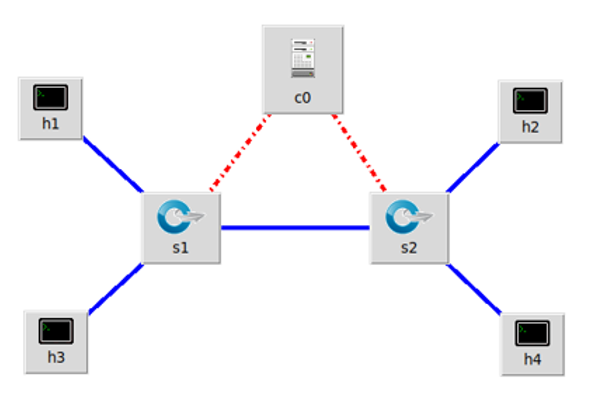
| 主机 | IP地址 |
|---|---|
| h1 | 192.168.0.101/24 |
| h2 | 192.168.0.102/24 |
| h3 | 192.168.0.103/24 |
| h4 | 192.168.0.104/24 |
- 构建拓扑
![]()
- 配置子网掩码和ip地址(只给出h1和h2的ip配置,其他是一样的)
![]()
![]()
![]()
- 检查
![]()
2.查看抓包结果,分析OpenFlow协议中交换机与控制器的消息交互过程,画出相关交互图或流程图。
- 在构建拓扑之前打开wireshark(选择any),然后运行文件并pingall。
![]()
- 查看抓的包
1.OFPT_HELLO
从6633端口到43820端口,openflow1.0协议

从43820端口到6633端口,openflow1.5协议

2.OFPT_FEATURES_REQUEST 从6633端口到43820端口
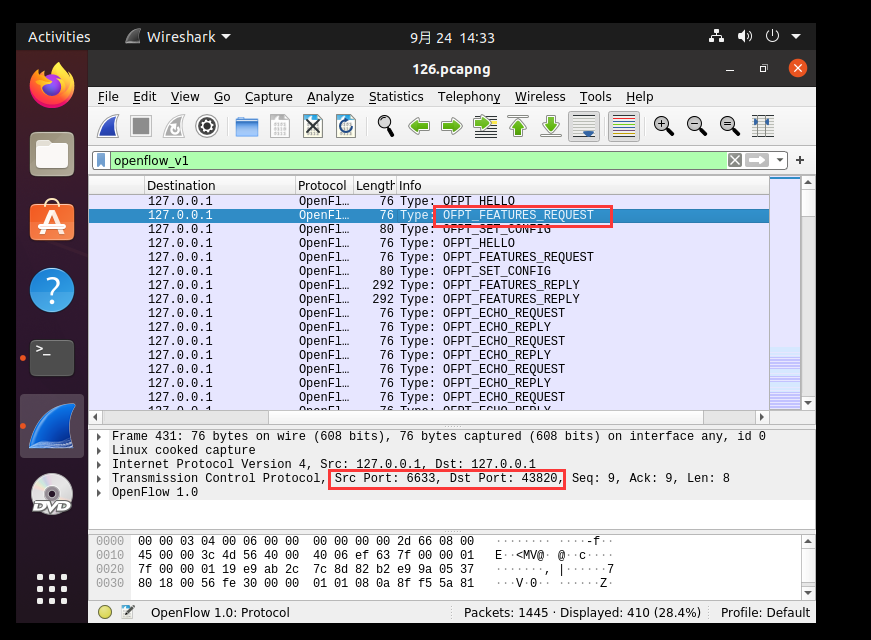
3.OFPT_SET_CONFIG 从6633端口到43820端口

4.OFPT_PORT_STATUS 从43820端口到6633端口
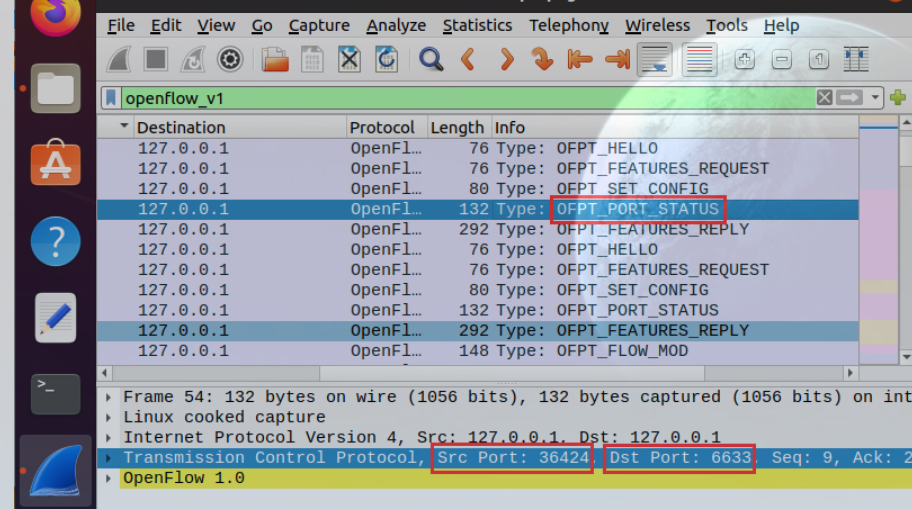
5.OFPT_FEATURES_REPLY 从43820端口到6633端口

6.OFPT_PACKET_IN 从43820端口到6633端口

7.OFPT_PACKET_OUT 从6633端口到43820端口
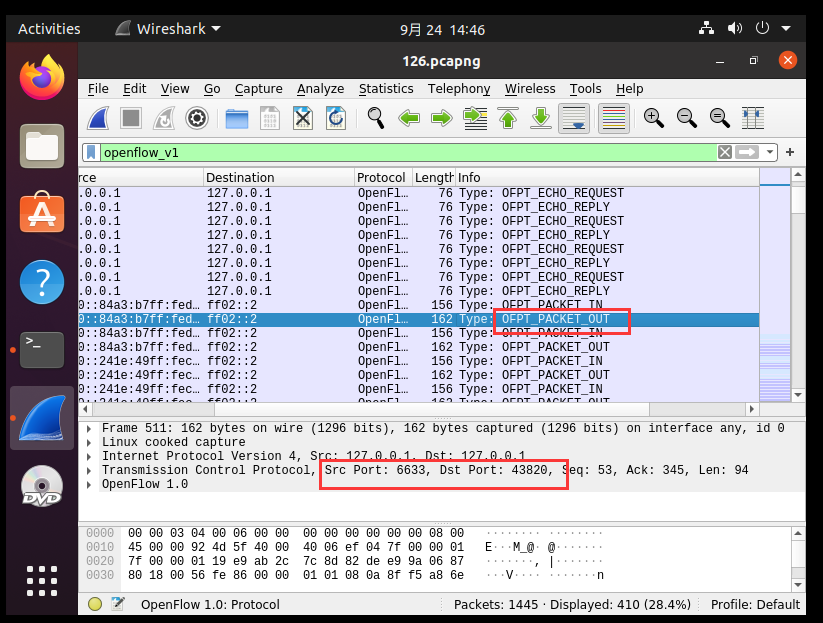
8.OFPT_FLOW_MOD 从6633端口到43820端口
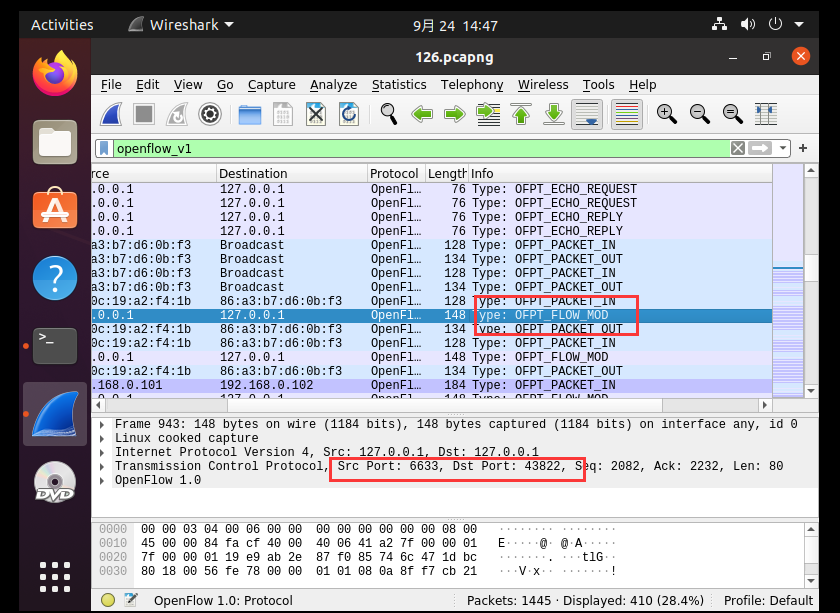
- 对应流程图如下:
![]()
3.回答问题:交换机与控制器建立通信时是使用TCP协议还是UDP协议?
Transmission Control Protocol即TCP协议
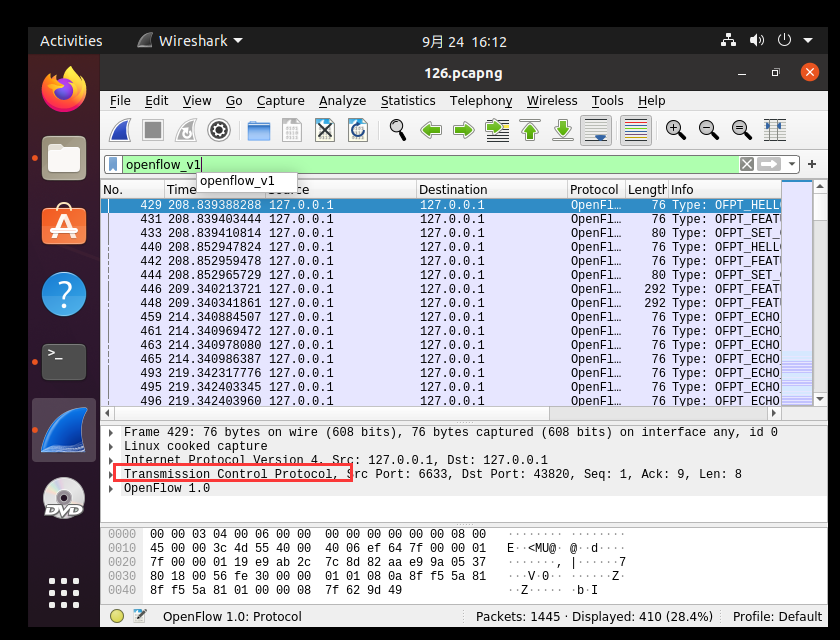
(二)进阶要求
将抓包结果对照OpenFlow源码,了解OpenFlow主要消息类型对应的数据结构定义。
1.HELLO
struct ofp_header {
uint8_t version; /* OFP_VERSION. */
uint8_t type; /* One of the OFPT_ constants. */
uint16_t length; /* Length including this ofp_header. */
uint32_t xid; /* Transaction id associated with this packet.
Replies use the same id as was in the request
to facilitate pairing. */
};
struct ofp_hello {
struct ofp_header header;
};
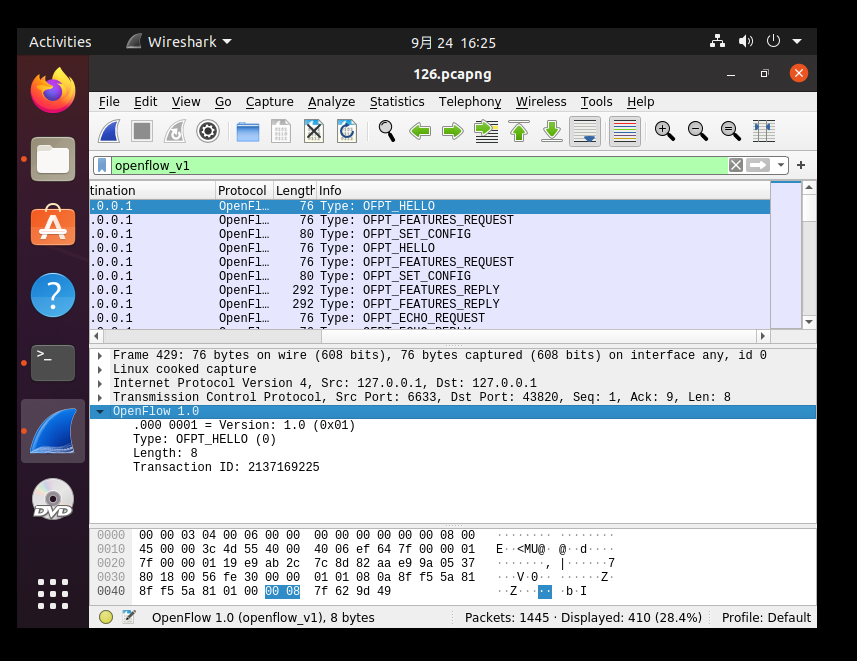
2.OFPT_FEATURES_REQUEST
源码与HELLO类似

3.OFPT_SET_CONFIG
/* Switch configuration. */
struct ofp_switch_config {
struct ofp_header header;
uint16_t flags; /* OFPC_* flags. */
uint16_t miss_send_len; /* Max bytes of new flow that datapath should
send to the controller. */
};

4.OFPT_PORT_STATUS
/* A physical port has changed in the datapath */
struct ofp_port_status {
struct ofp_header header;
uint8_t reason; /* One of OFPPR_*. */
uint8_t pad[7]; /* Align to 64-bits. */
struct ofp_phy_port desc;
};

5.OFPT_FEATURES_REPLY
struct ofp_switch_features {
struct ofp_header header;
uint64_t datapath_id; /* Datapath unique ID. The lower 48-bits are for
a MAC address, while the upper 16-bits are
implementer-defined. */
uint32_t n_buffers; /* Max packets buffered at once. */
uint8_t n_tables; /* Number of tables supported by datapath. */
uint8_t pad[3]; /* Align to 64-bits. */
/* Features. */
uint32_t capabilities; /* Bitmap of support "ofp_capabilities". */
uint32_t actions; /* Bitmap of supported "ofp_action_type"s. */
/* Port info.*/
struct ofp_phy_port ports[0]; /* Port definitions. The number of ports
is inferred from the length field in
the header. */
};
/* Description of a physical port */
struct ofp_phy_port {
uint16_t port_no;
uint8_t hw_addr[OFP_ETH_ALEN];
char name[OFP_MAX_PORT_NAME_LEN]; /* Null-terminated */
uint32_t config; /* Bitmap of OFPPC_* flags. */
uint32_t state; /* Bitmap of OFPPS_* flags. */
/* Bitmaps of OFPPF_* that describe features. All bits zeroed if
* unsupported or unavailable. */
uint32_t curr; /* Current features. */
uint32_t advertised; /* Features being advertised by the port. */
uint32_t supported; /* Features supported by the port. */
uint32_t peer; /* Features advertised by peer. */
};

6.OFPT_PACKET_IN
struct ofp_packet_in {
struct ofp_header header;
uint32_t buffer_id; /* ID assigned by datapath. */
uint16_t total_len; /* Full length of frame. */
uint16_t in_port; /* Port on which frame was received. */
uint8_t reason; /* Reason packet is being sent (one of OFPR_*) */
uint8_t pad;
uint8_t data[0]; /* Ethernet frame, halfway through 32-bit word,
so the IP header is 32-bit aligned. The
amount of data is inferred from the length
field in the header. Because of padding,
offsetof(struct ofp_packet_in, data) ==
sizeof(struct ofp_packet_in) - 2. */
};
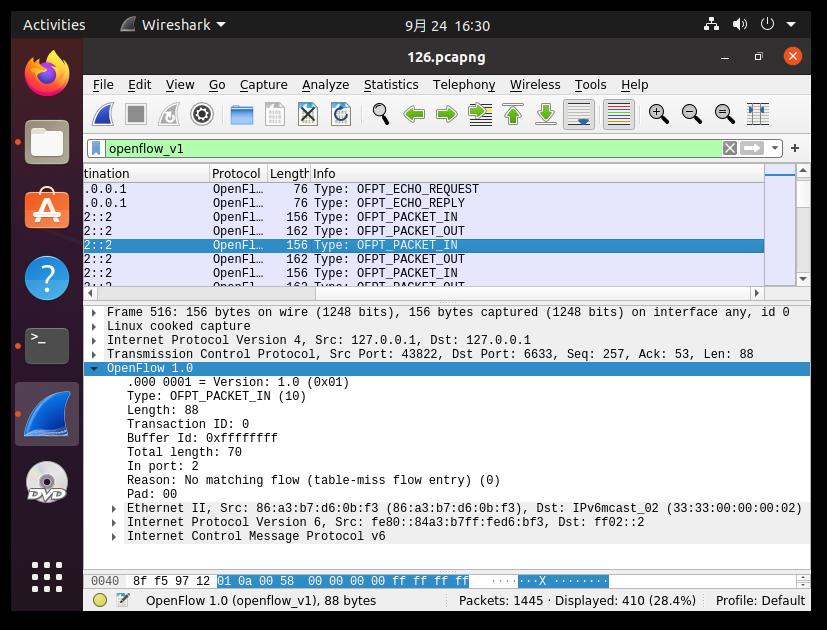
7.OFPT_PACKET_OUT
struct ofp_packet_out {
struct ofp_header header;
uint32_t buffer_id; /* ID assigned by datapath (-1 if none). */
uint16_t in_port; /* Packet's input port (OFPP_NONE if none). */
uint16_t actions_len; /* Size of action array in bytes. */
struct ofp_action_header actions[0]; /* Actions. */
/* uint8_t data[0]; */ /* Packet data. The length is inferred
from the length field in the header.
(Only meaningful if buffer_id == -1.) */
};
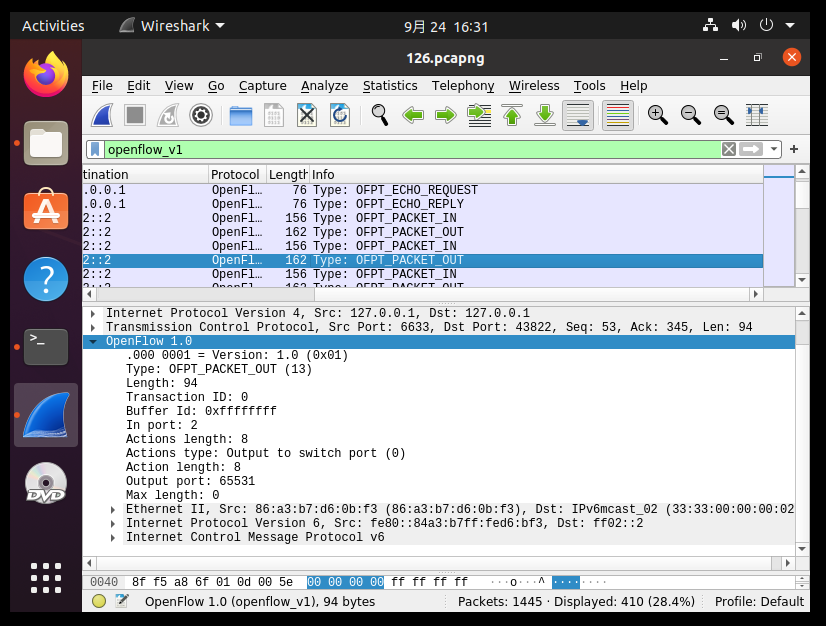
8.OFPT_FLOW_MOD
struct ofp_flow_mod {
struct ofp_header header;
struct ofp_match match; /* Fields to match */
uint64_t cookie; /* Opaque controller-issued identifier. */
/* Flow actions. */
uint16_t command; /* One of OFPFC_*. */
uint16_t idle_timeout; /* Idle time before discarding (seconds). */
uint16_t hard_timeout; /* Max time before discarding (seconds). */
uint16_t priority; /* Priority level of flow entry. */
uint32_t buffer_id; /* Buffered packet to apply to (or -1).
Not meaningful for OFPFC_DELETE*. */
uint16_t out_port; /* For OFPFC_DELETE* commands, require
matching entries to include this as an
output port. A value of OFPP_NONE
indicates no restriction. */
uint16_t flags; /* One of OFPFF_*. */
struct ofp_action_header actions[0]; /* The action length is inferred
from the length field in the
header. */
};
struct ofp_action_header {
uint16_t type; /* One of OFPAT_*. */
uint16_t len; /* Length of action, including this
header. This is the length of action,
including any padding to make it
64-bit aligned. */
uint8_t pad[4];
};

四、个人总结
实验难度
本次实验大部分为验证性实验,相对于之前几次实验来说比较简单。主要是验证各个包传递的信息以及从哪里传到哪里。在实验过程中需要不断查阅资料,询问同学,难度算是很正常的。
实验过程遇到的困难及解决办法
- 主要遇到的问题是:经常没办法一次抓包就抓到所需要的全部包,总因为步骤不是很规范导致缺少某个包。
解决方法:最好在建立拓扑之前就打开wireshark,然后拓扑构建完成之后pingall,即可获取到所有的包。
个人感想
这次试验进一步学习了wireshark的使用,对wireshark的各项功能有了更加深刻的理解。其次也认识到了拓扑建立过程中所用到的协议,以及OpenFlow协议的数据交互的机制。有了这些理论知识的铺垫,我认为我能够在接下来的实践过程中游刃有余地完成任务。



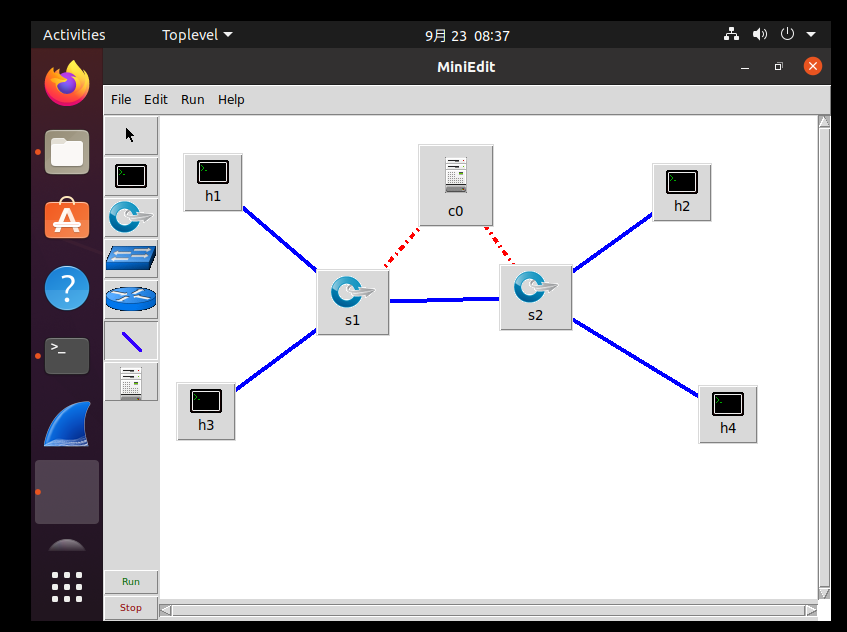
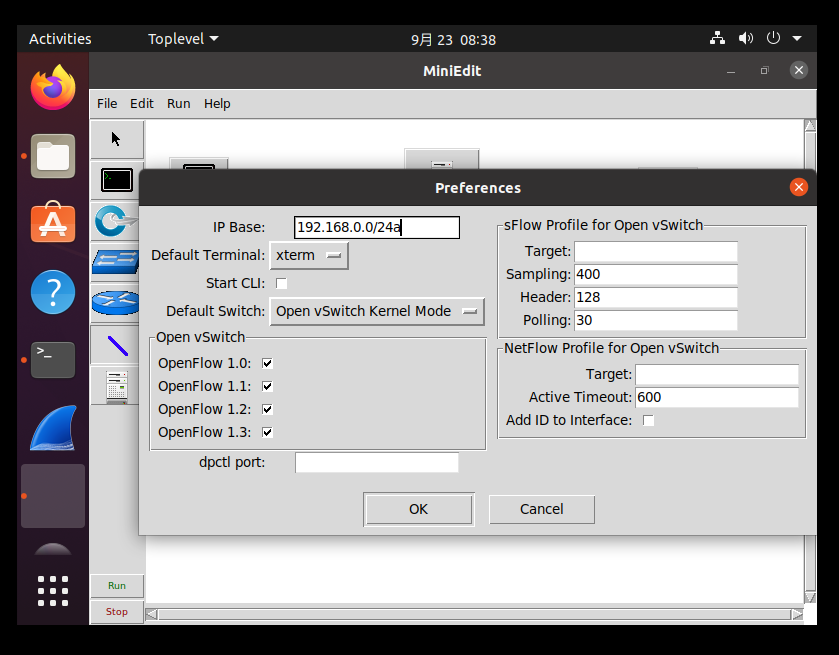
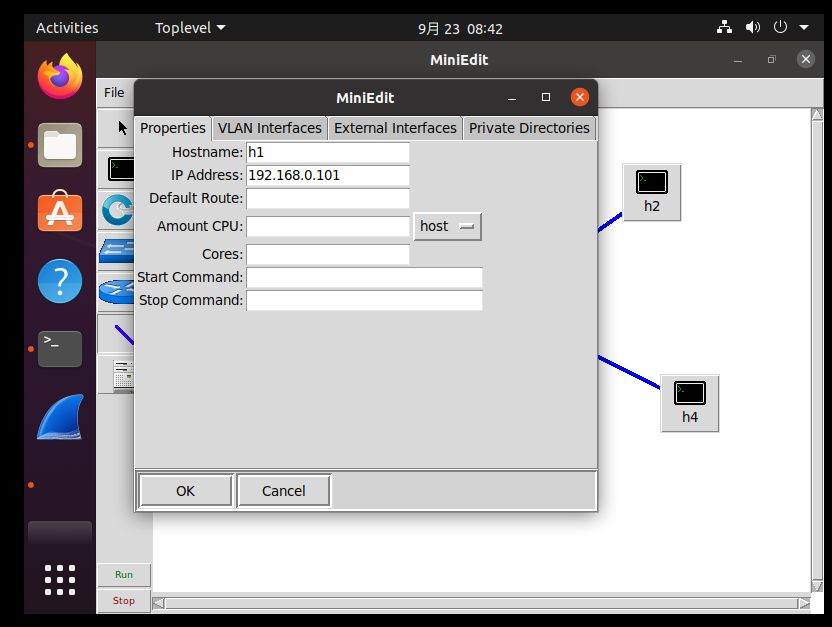
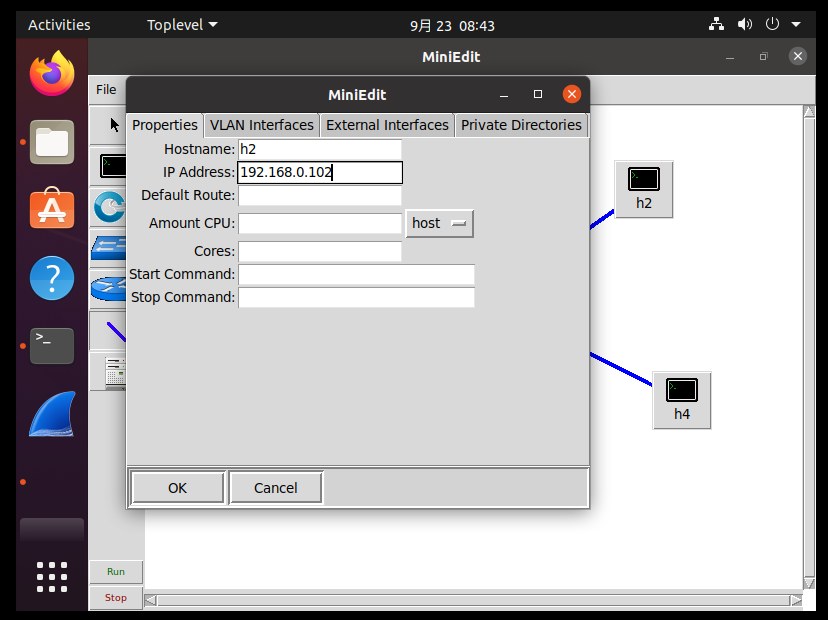
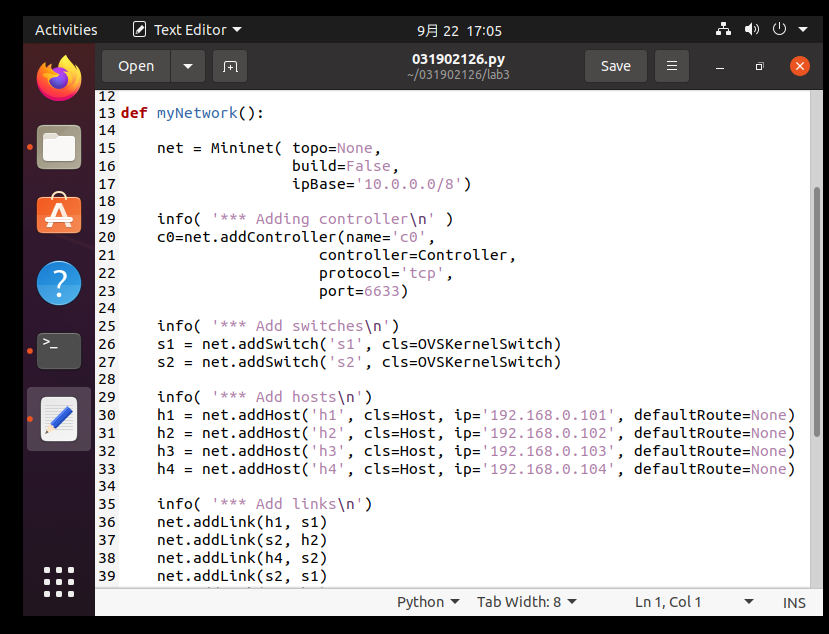



 浙公网安备 33010602011771号
浙公网安备 33010602011771号